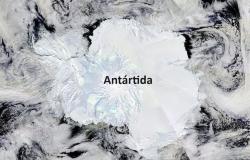JavaScript is disabled! Why you want to do so? Please enable JavaScript in your web browser!
According to a press release from the scientific team whose work was coordinated by Professor Abderrazak El Albani, a lecturer and researcher at the Institute of Chemistry of Environments and Materials in Poitiers, these fossil arthropods found petrified in their last posture are representatives of an ecosystem dating back 515 million years.
Discovered in volcanic ash levels in Aït Youb, a marine “Pompeii” in the Souss-Massa region, “these are arthropod-type fossils found petrified in 3D in their last posture. They are representatives of a 515 million year old ecosystem, a marine “Pompeii”, discovered in volcanic ash levels, in Aït Youb, in the Souss-Massa region of Morocco. This work is crowned by the cover of the magazine Science“, explains Professor Abderrazak El Albani in an interview with MAP.
“This is the best preservation of fossil life forms in volcanic ash ever observed in the world to date. Simply unique in the world! We observe all the details, even micro-metric, including the digestive tract, the stomach… The specimens are neither deformed nor altered. It is a 3D photograph of the time (515 million years) without change.”
It also demonstrates that “the technique ofnon-destructive imaginghigh-resolution X-ray microtomography (XRµCT), is a powerful tool for observing fossilized objects in very hard rocks in 3D, without the risk of altering them, because by digitally filling the voids left by the organisms, they were able to create casts of the extinct bodies with a striking level of detail.
Thanks to this discovery, he added, “pyroclastic deposits should become new targets of study given their exceptional potential to trap and preserve biological remains, even soft ones, without generating degradation generally at the origin of the incompleteness of the specimens or even their destruction New windows thus open on the past of our planet.
Explaining this discovery, the team of researchers specifies, in the press release, that volcanoes located at the border of tectonic plates are known for their explosive and large-scale eruptions, which can generate several tens of km³ of material. These eruptions can trap present life almost instantly, thus preserving under their ashes the evidence of entire civilizations, such as those of Santorini and Vesuvius.
They claim that with over 22,000 species discovered spanning the Paleozoic Era (539–252 Ma), trilobites are probably the best-known fossil invertebrates. While their calcite exoskeleton gives them a high potential for fossilization, which is why they are so abundant in the fossil record, their unmineralized appendages and internal organs are known only from a limited number of specimens.
In Aït Youb, the same source explains, “515 million years ago, during a volcanic eruption, the living organisms present were buried by fiery clouds. The biological tissues were then consumed by the intense heat, leaving only cavities in the solidified ashes: the molds of the organisms.”
This study, adds the press release, sheds new light on the anatomical organization of trilobites, particularly the head part. In particular, it reveals for the first time in this class of fossil arthropods the presence of a labruma soft mouthpart serving as an upper lip in current euarthropods, thus closing a debate that has been going on for more than a century.”
Given the global importance of the site studied, it would be essential and crucial to protect it by classifying it UNESCO World Heritage Siteconcludes the press release.
Do you have a real estate project in mind? Yakeey & Médias24 help you make it happen!
© Médias24. Any reproduction prohibited, in any form whatsoever, without the written permission of the Société des Nouveaux Médias. This content is protected by law, in particular law 88-13 relating to the press and publishing as well as laws 66.19 and 2-00 relating to copyright and related rights.






